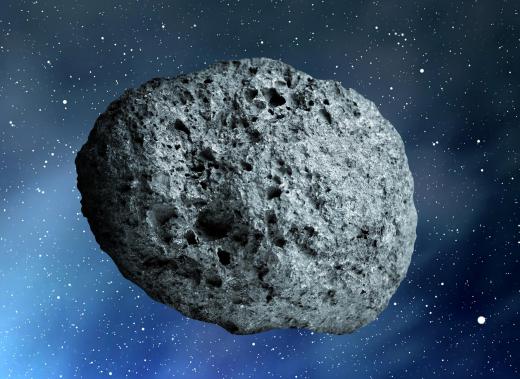What is a Dwarf Planet?
 Michael Anissimov
Michael Anissimov
A dwarf planet is a new category of celestial body created by the International Astronomers Union in 2006. It includes celestial bodies massive enough to be spherical, in orbit around the Sun, which are not satellites. The crucial factor dividing a planet from a dwarf planet is that a planet must have succeeded in clearing the area of its orbit from debris and other objects, whereas a dwarf planet has not.
When the category of dwarf planet was created, three bodies were immediately classified as such: Ceres, the largest asteroid, now a dwarf planet; Pluto, in the Kuiper belt, demoted from the status of planet; and Eris, a scattered disc object located far beyond the orbit of Pluto. It was the discovery of Eris that partially prompted the International Astronomers Union to more precisely define what they meant by the word “planet.”

Despite the name “dwarf planet”, dwarf planets are not considered a subset of planets, but rather in a different category altogether. Objects still smaller than dwarf planets, for instance, those lacking sufficient mass to be spherical, are called small solar system bodies, which includes comets and asteroids.
Although only three dwarf planets recognized, astronomers suspect that there many be as many as 200 in the far reaches of the solar system. There are numerous potential candidates for dwarf planethood which must be studied closer to confirm their status. For a celestial body to be roughly spherical requires a diameter of at least 400 km. The smallest known spherical body today is the moon Mimas.

There are numerous trans-Neptunian objects with diameters larger than 400 km: Varuna, Orcus, Ixion, Quaoar, 2003EL61, 2005FY9, and several others. Although we can estimate their diameter, it is more difficult to estimate whether they are roughly spherical or not. This will require more powerful telescopes. There are also several large asteroids which may be dwarf planets: Vesta, Pallas, and Hygiea, the second, third, and fourth largest asteroids after Ceres.
AS FEATURED ON:
AS FEATURED ON:












Discussion Comments
2005 FY9 and 2003 EL61 are Makemake and Haumea. Maybe this article was written before they were named. All minor planets like asteroids and TNO:s including dwarf planets get a provisional designation before they get a real name. Asteroid Apophis for example was known as 2004 MN4.
@wesley91: Thanks for that additional information!
There are actually five dwarf planets recognized by the IAU, not three. The five dwarf planets are Pluto, Ceres, Haumea, Eris, and Makemake. Only Ceres and Pluto have been studied in detail. Eris was added to the category since it is bigger than Pluto.
Haumea and Makemake were accepted as dwarf planets because they display absolute magnitude of less than +1 and a minimum diameter of 838km. Those are conditions set by the IAU.
Research does reveal three distinct dwarf planet, which are the asteroid Ceres, Eris, and planet Pluto. By definition, there are many other objects in our solar system that would qualify as being dwarf planets.
this is pretty good but make it easier to use for assignments. thanks!
this is a good webpage! but try to focus more on the topic and make it more easier to understand for assignments!!
Post your comments